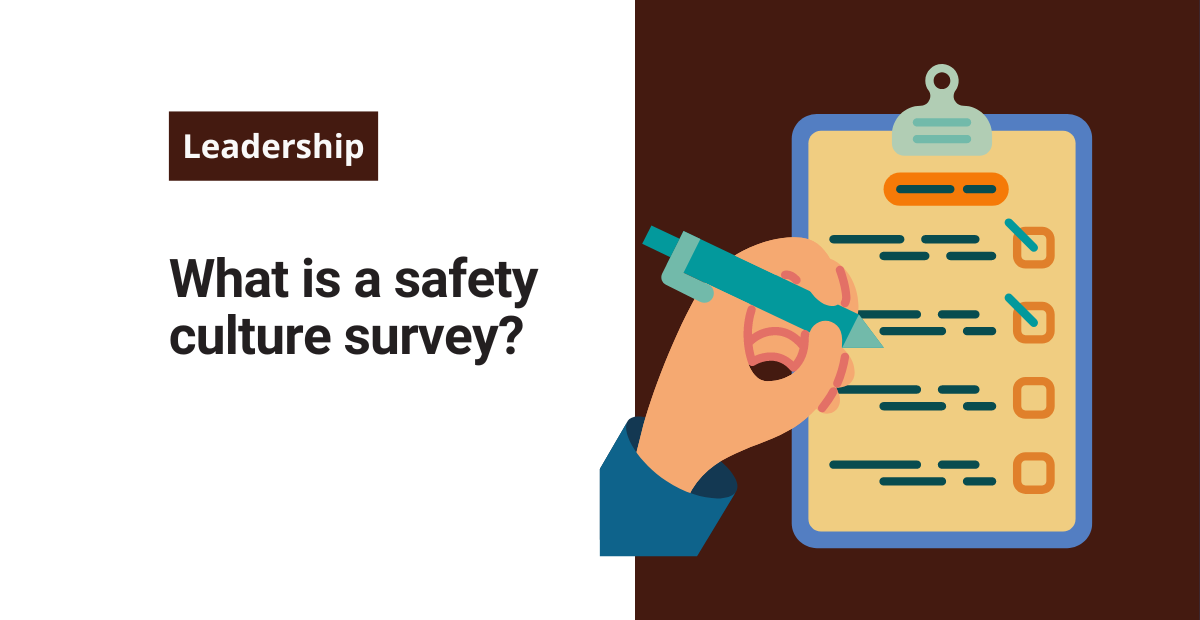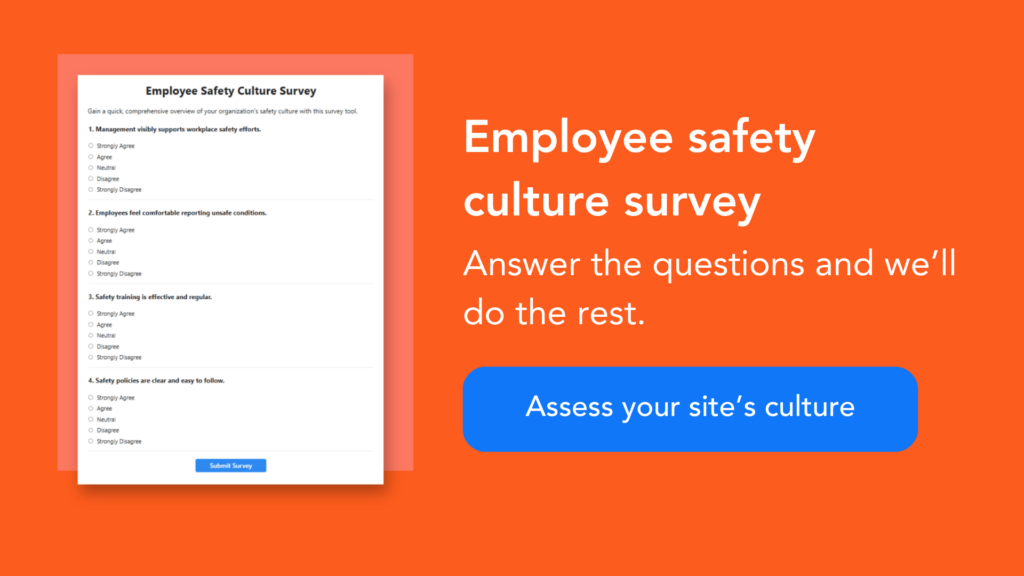A culture safety survey, also known as an “EHS perception survey,” is an evaluation that employees complete to share their feelings on safety within your company.
This survey must be both voluntary and anonymous, otherwise you run the risk of getting inaccurate results. Done properly, this exercise can provide invaluable information on ways to improve your approach to environmental, health, and culture safety survey performance.
Free template!
Use this template to create a survey aiming at culture safety, allowing your employees to provide feedback regarding their perceptions. Conducting a culture survey can be enlightening.
The goal of a culture safety survey
The primary goal of an EHS perception survey is to really understand how your employees feel about safety. In most organizations, frontline workers are not comfortable fully voicing their concerns without fear of retribution. This is where a culture safety survey plays a vital role.
But to protect your workers from safety issues, you need to build trust so they can share their concerns. Here are a few questions your survey should answer:
- How do the employees feel about the company’s culture?
- Do workers feel safe at work? If not, why?
- Are workers aware of the various safety initiatives within the company/facility? Often, culture safety surveys can help pinpoint gaps in awareness.
- How do workers perceive the EHS team?
- What are the major areas of concern that workers have on a daily basis?
Pros and cons of performing a perception survey
Any time you ask for feedback, you need to be prepared for answers you don’t want to hear. Like any other survey, a culture survey has its pros and cons. Be sure to weigh these factors, especially when considering a safety culture survey.
Cons of handing out a perception survey
- The survey is built upon current employee perceptions and those perceptions change over time, impacting culture safety survey outcomes.
- Employees’ past work experiences may influence their answers.
- Workers may feel overwhelmed if the safety department has been too active lately.
- Some employees may not fully understand the context of all questions.
Pros of conducting a safety culture survey
- Gives full insight into how employees are feeling, making the it a valuable tool.
- Builds trust among your team. Culture surveys can strengthen bonds and convey transparency.
- May help guide the direction of your EHS program.
- Costs time to conduct but is otherwise free.
- Helps uncover key issues not previously mentioned (due to the anonymity factor).
The last bullet is one of my favorites because you can find out so much more information from employees when they feel truly trusted and valued. And especially if you’re just coming into an organization, you can establish that relationship right away.
While safety culture surveys can be a great resource, they’re no substitute for daily engagement. At the end of the day, walking the jobsite and interacting with workers to understand their barriers is the best way to build excellent relationships and implement meaningful changes.

Jason Hathcoat, CSP
Jason is a seasoned EHS professional with more than 20 years of experience working in health and safety. He currently serves as a Senior EHS Leader at Trane Technologies.






